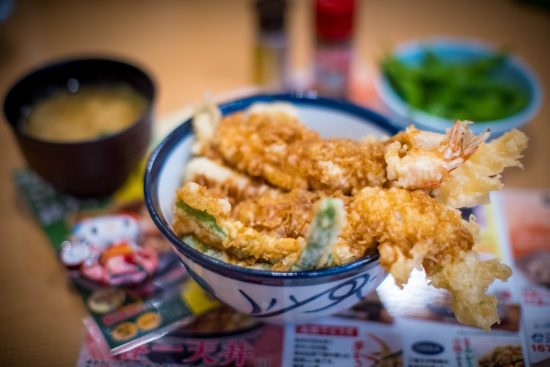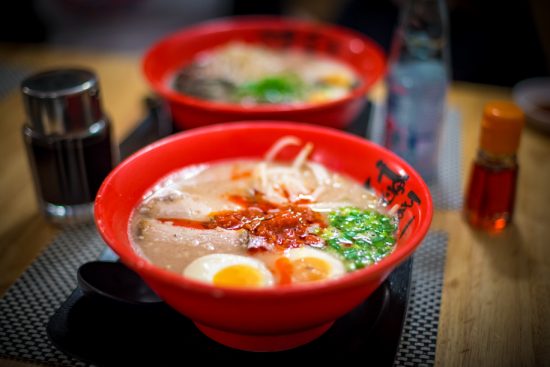

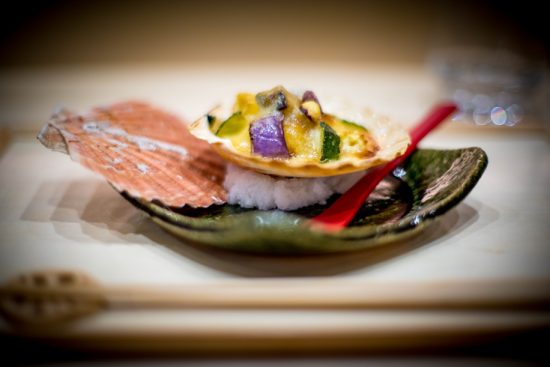
Photographing Japanese food with a Nikon D750 by Vincent from cecj2.com:
I’m Vincent from Paris, France and I created the website cecj2.com in 2008 about Japanese restaurants. As a semi-professional food blogger, I have read many books and articles on how to take food pictures. A tripod, a long distance lens (85mm at least) and a light diffuser were used, but none of these are possible when you are in a fancy Japanese restaurant in Tokyo or in a dive bar.
I’ll explain to you all my tips for real-life food photography. As a blogger, I photographed in more than 1200 restaurants in the past 10 years all over Europe and Japan. I bought my Nikon D750 in the Rising Sun’s capital – it was one-third of the price and in perfect shape.
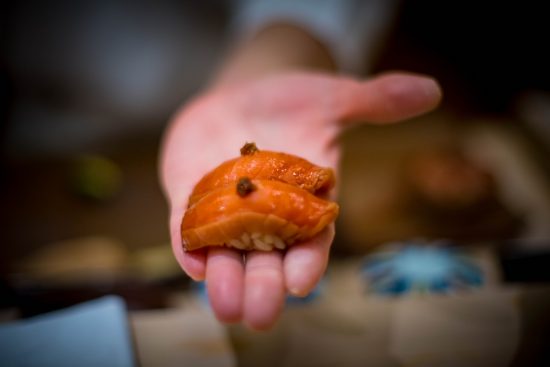
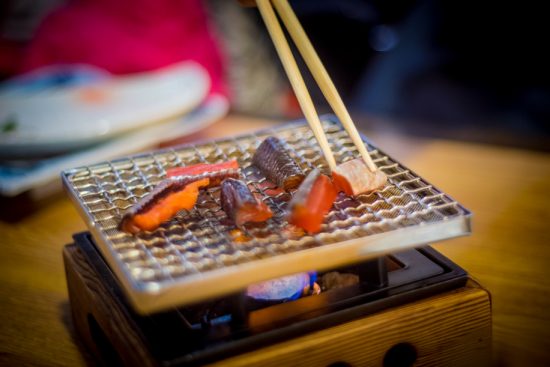
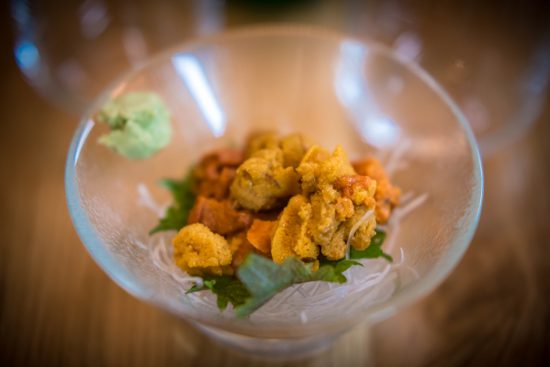
I use only one lens, the Nikon AF-S Nikkor 50mm f/1.4G with quite fast auto-focus, but before that, I used manual lenses, there’s no chance that your food will get away, no worries. As a Japanese aficionado, I’m a huge fan of “bokeh” which means “blur” in Japanese and can only be achieved with a fast lens. That’s my first personal aesthetic choice. Most food photographers will tell you not to go further than f/2.8 but I personally disagree. I would even try a f/0,95 Mitakon lens but unfortunately, I can’t use it on my Nikon D750. Starting with a 50mm f/1.8 is also a great choice.
The other plus of using a lens with a wide aperture is that most of the restaurants are low light places. With the high ISO capabilities, I never had problems with grainy or blurry pictures. But the best is to choose a table with a light spot just above where the food will be – for example at the counter of your favorite sushi bar. Beware of LEDs light, they can create uncomfortable shadow stripes on the pictures. Most food books are shot from above and I don’t find this pleasant or doable in a restaurant. Sorry, I’m not a fan of Instagram food pictures. I take my photographs from the customer’s point of view, at around 45°, I find it a more natural way to present the plate.
Before shooting Nikon, I was with a Sony A7s that has the great advantage to be compatible with Leica’s Noctilux cheap clone the Mitakon 50mm f/0,95 lens. When you think about it, it seems like the best option: super low light capabilities coupled with cat’s eyes lens. But that’s theory and what it’s really annoying is the electronic shutter that produces black stripes on your pics with LEDs light in the restaurant. Also, 12MP is just not enough. The battery on the Sony a7s doesn’t last even a day, where Nikon’s last almost a week. And I think Nikon is really made to last longer but that’s just my own opinion. So I switched to Nikon.
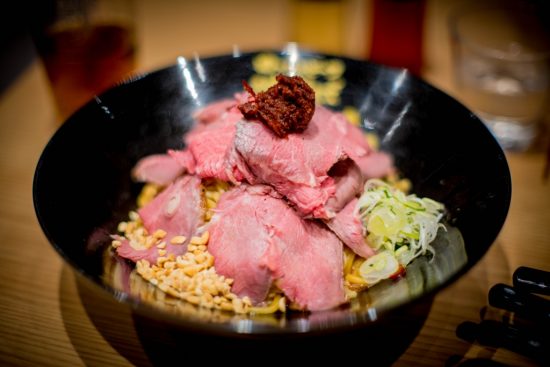
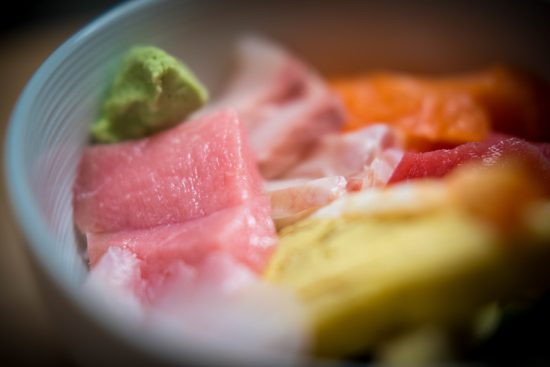
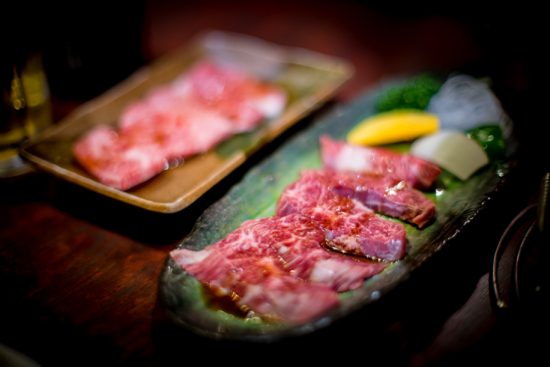
I always prepare my “set” a.k.a. the table before the dishes arrive. Japanese cuisine is always about odd numbers: 3, 5 or 7. I repeat this pattern and I put sushi with soy sauce and my glass of water or my cup of tea. I prefer glass because it looks like a sparkling background. When the plate arrives, I take between 1 to 5 pictures, trying to put the plate at the same distance from the edges and respecting rules of thirds horizontally: the plate is the center of the frame. I also don’t mind objects before the dish, like a bottle, that also produces a pleasant bokeh. Then it’s time to enjoy my meal! Remember to shoot fast and don’t disturb other customers, especially in Japan.
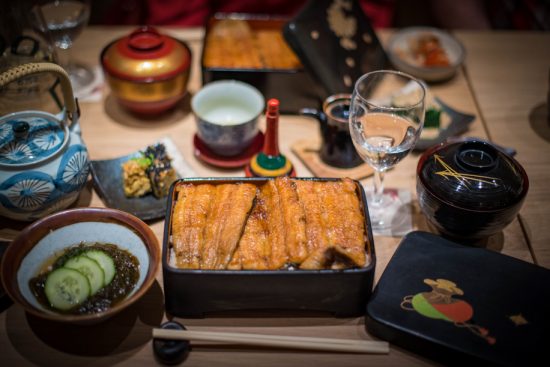
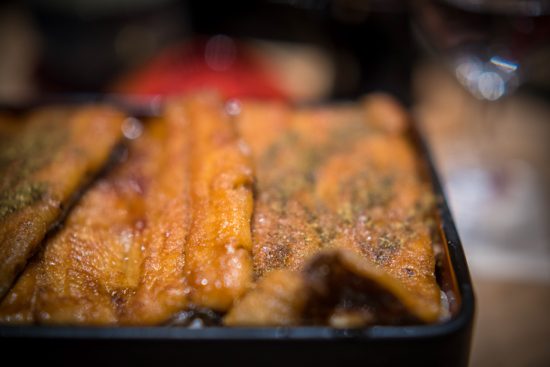
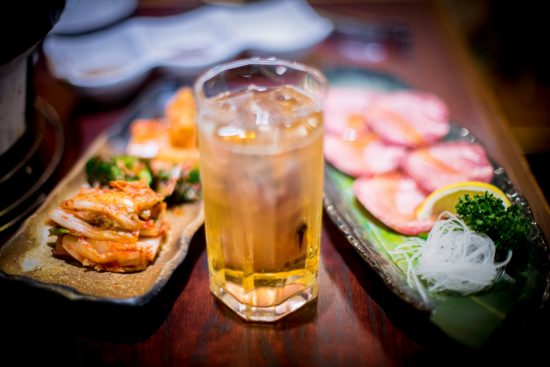
For close-ups, I tried to use macro lenses but it’s not easy or pleasant to change gear in the middle of a restaurant. Finally, I found a Macro +3 filter from Marumi with an f/2 aperture that gives the best results. But don’t forget to step back to f/1.4 when you take it off. You have to think simple to produce the best results. You can focus on one piece of fish for example.
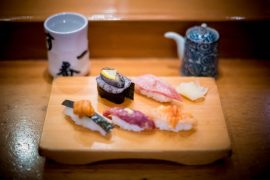
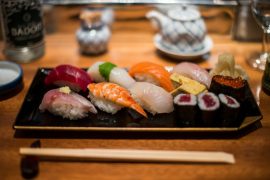
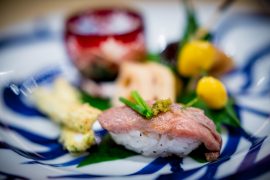
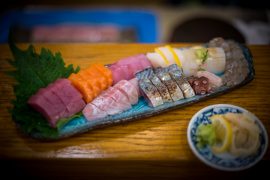

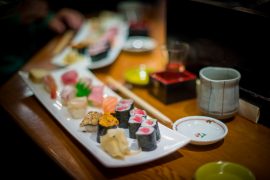
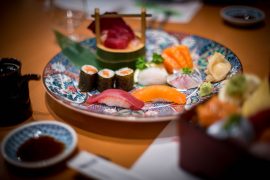
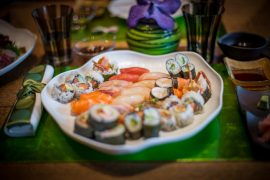
I shoot RAW of course and I have my own Lightroom preset where I only change the temperature and tint. For the Nikkor 50mm, I always reduce the 200K temperature and keep the original tint selected by the D750. Also, beware that at lunchtime natural and artificial light mix and produce too much blue and you’ll have to lower it in HSL. My second personal aesthetic choice is to over-boost vibrance and saturation, add more blacks and whites for more vivid pictures but you’ll have to find your own style. I’m also a huge fan of vignetting.
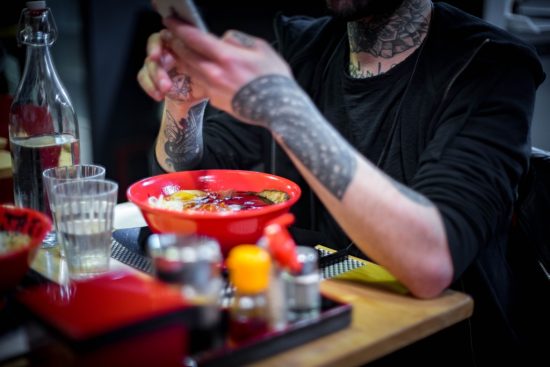
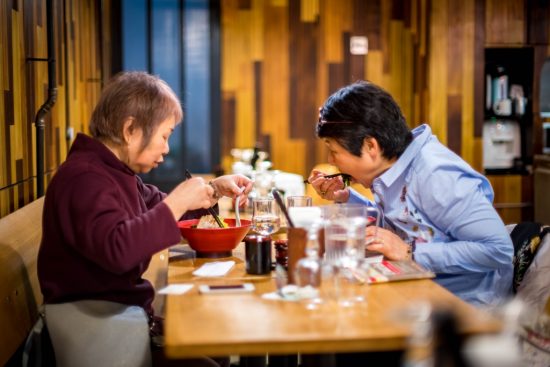
I heard a lot of people dreaming of a D850. What’s the point of having huge RAW files that will overheat your laptop and take a lot of space on your hard drive? 24MP is really enough to produce pictures for a blog. I also hear that my pictures hurt the eyes or look like they are taken in the 70s, but my point of view is to produce pictures you like. Follow your own style. So what are you waiting for? Go to your nearest Japanese restaurant right away!
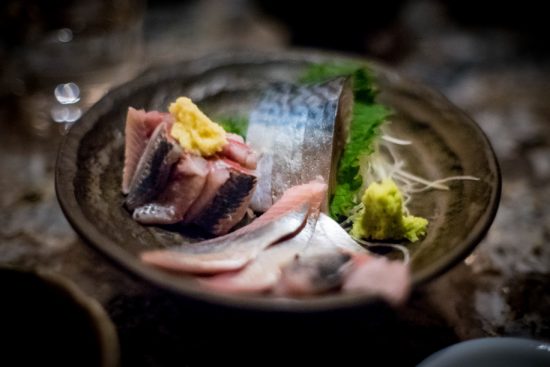
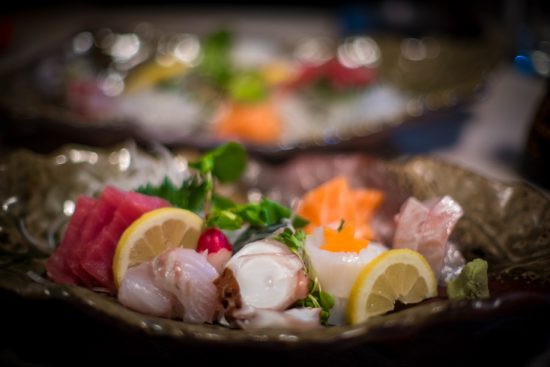
If you have an interesting idea for a guest post, you can contact me here.
